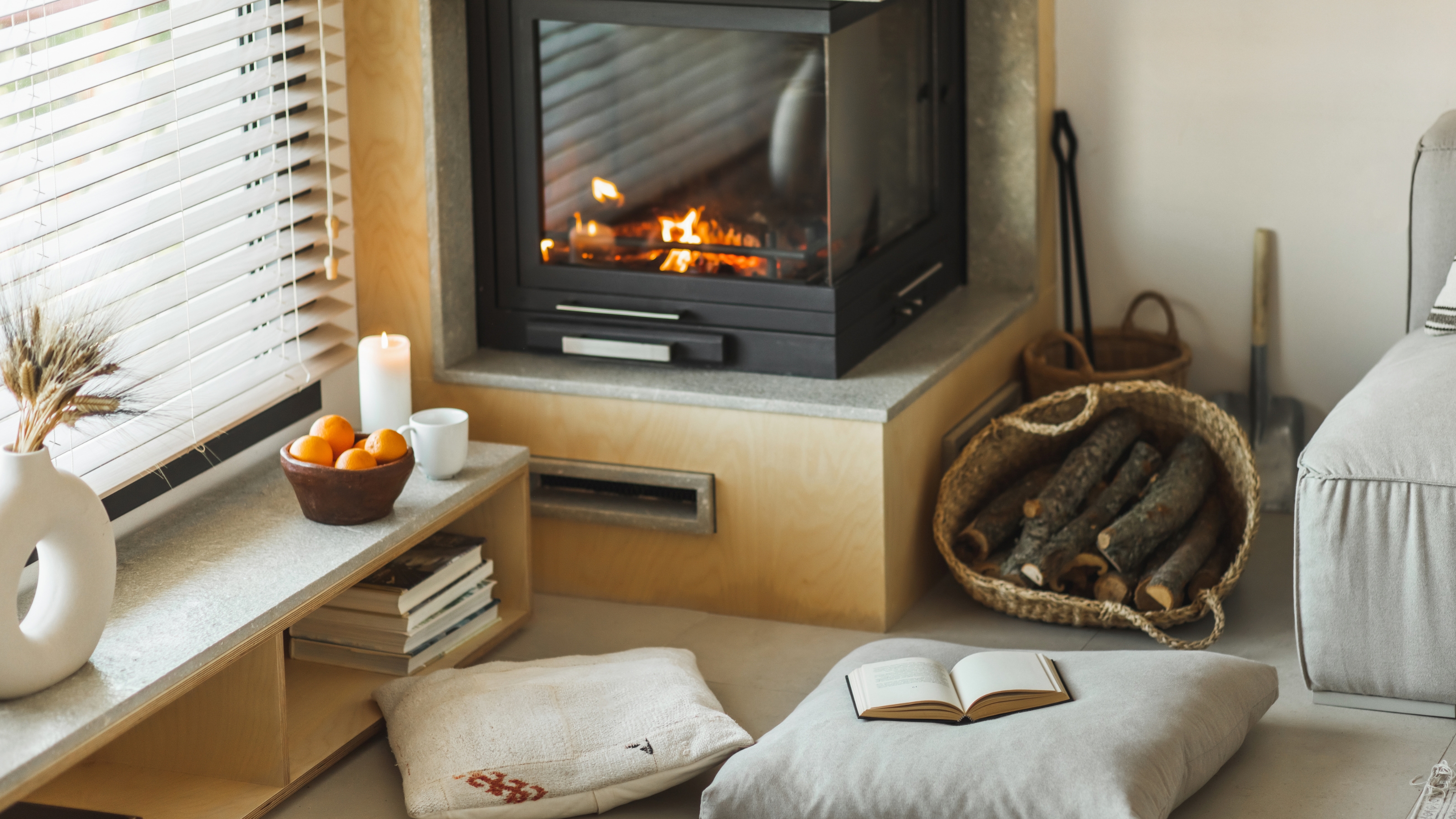

Feeling a little chilly and wondering how to warm up a small room quickly? I know the struggle. It’s freezing outside, so naturally, when you step inside, you expect your home to feel nice and toasty. But you quickly realize that it’s even colder inside (or, at least, it feels that way).
You’re desperate to get the space warmed up, and fast. But even cranking up the heating (which comes with a rather hefty price tag) doesn’t seem to get the room feeling cozy quickly. Instead, it seems to take hours to actually warm up the space.
After decorating a small space, warming it up quickly might seem like a tricky task but, if you get the approach right and know the steps to take, it doesn’t have to be. To help you out, I’ve spoken to the experts about all of the best ways to warm up a small room quickly.
How to warm up a small room quickly
You’d think that warming up a small room, such as a teeny tiny bedroom or a dorm room, would be easy. But, the reality is that, even when you have your heating cranked up, it can take time to warm up the space. Even with the best small space buys, figuring out how to make the most of your room can be a little difficult. To help you out, I’ve rounded up all the best, expert-approved hacks for heating up any small space quickly.
1. Use a portable heater
While traditional heating systems can take a while to warm up, a portable heater offers instant warmth, plus a space heater doesn't cost too much to run. So, for warming up a room quickly, a portable heater can be a total godsend.
Josh Mitchell, an HVAC technician and the owner of airconditionerlab.com, says: “For a quick solution, a portable electric heater can be very effective. Choose a model with a thermostat for better temperature control and energy efficiency. It's important to place the heater on a hard, flat surface away from flammable materials and never leave it unattended.”
Just make sure that if you're using portable heaters (like this Amazon Basics heater that has over 24,000 five-star reviews) around your home you have safety features on, such as topple-over protection (so that the heater switches off if it falls over) and can easily adjust the thermostat. Oh, and don't forget to clean your portable heater regularly.
2. Seal drafts and leaks
Even if you're pumping heat into a room, if the doors and windows aren't properly insulated, you're going to struggle to warm the space up and retain that heat.
Mitchell says: “Often, small rooms feel cold due to drafts from windows and doors. Use weather stripping or draft stoppers (like these Duck draft stoppers from Target) to seal these leaks. This simple step can significantly reduce heat loss, making your room warmer without extra heating.”
So, finding little ways to seal your room to ensure that any heat that's in it is able to be retained is vital to keeping your space feeling cozy and comfortable.
3. Insulate windows
Windows are a big issue when it comes to heat loss within your home. If you've got older windows that aren't properly insulated, you're going to lose a lot of heat through them.
Mitchell explains: “Insulating windows can help retain heat. Temporary solutions like window insulating film or heavy curtains can effectively keep the warmth in and the cold out.”
If you rent and can't convince your landlord to upgrade your windows to better-insulated ones, luckily there are a number of temporary solutions you can try instead, like these draft stopper curtains from Target.
4. Use rugs on bare floors
This might sound pretty basic but, honestly, it really does work. I have hard floors in my home and rugs, like the area rugs we reviewed from Target, are a total game-changer for keeping each room feeling warmer.
Mitchell says: “If your room has bare floors, adding a rug can provide insulation and make the floor feel warmer underfoot. This is particularly effective in rooms above unheated spaces like garages.”
Itay Simchi, Real Estate Professional, adds: "Place rugs or carpets on the floor to provide insulation and prevent the cold from seeping through," and recommends looking for thick and plush rug options.
Pick out some thick, fluffy rugs for any space in your home that feels cold and they should help to keep the heat from escaping through the floor, while also making the room look a little cozier.
5. Rearrange furniture
Okay, having your radiator behind your sofa might ensure that you're always toasty when you sit on it but it's most likely blocking the heat from spreading around the room.
Mitchell explains: “Make sure furniture isn’t blocking heating vents or radiators. Rearranging furniture to improve airflow can help distribute heat more evenly throughout the room.”
Simchi adds: "Rearrange furniture to maximize warmth. Move beds, couches, and desks away from exterior walls, as they tend to be colder."
So it might be best to slightly rearrange your living room furniture so that none of your heating sources are blocked. Instead, position your furniture in a way that allows the warm air coming from your heating sources to flow more easily around the room.
6. Incorporate reflective surfaces
This tip is a really great one, and one that a friend of mine swears by. It might look a little odd, having aluminum foil behind your radiators but, honestly, it works a total treat for reflecting heat back into the room, rather than allowing it to seep out of the walls and windows.
Mitchell says: “Placing aluminum foil behind radiators, especially those on external walls, can reflect heat back into the room rather than letting it escape through the walls.”
Want something thicker than aluminum foil? This reflective bubble wrap sheet from Amazon, which features thermal properties, should work just as well.
FAQs
Do smaller rooms heat up more quickly?
You would think that the answer would be yes but it depends on a range of factors. These include how well-insulated the space is, what type of heating is being used, and various other things.
What is the cheapest way to warm up a small room?
Having a room that's properly insulted and will retain heat is important for keeping home heating costs low. In order to warm up any space you are going to need some form of heating, which comes with a cost. But if your room is able to retain the heat this will reduce how much you have to spend to keep the room warm.

Josh Mitchell is the owner of airconditionerlab.com. His aim is to help people easily solve their HVAC problems by offering solutions to home air conditioning issues.
Itay Simchi is a Real Estate Professional for Proven House Buyers.
Now that you know how to warm up a small space quickly, you might be wondering what little hacks there are for staying warm in a small space when you aren't able to heat it up as much as you'd like, such as staying warm in a shared dorm.
Or, if despite actually warming the place up it still lacks that cozy vibe, you might be wondering what steps you can take to create a cozy aesthetic in your home.
Join our newsletter
Get small space home decor ideas, celeb inspiration, DIY tips and more, straight to your inbox!

Hi! I’m Beth Mahoney and I’m a former staff writer at Real Homes. I’ve been a journalist for the national press for the past six years, specializing in commerce and trends-related lifestyle articles, from product reviews and listicles to guides and features. With an eye for pretty things (think: quirky wall prints, scalloped edge furniture, and decadent-looking tableware) but a limited budget, I love nothing more than a bargain buy.